Developments
- Details
- Written by: Quintus Potgieter
Japanese automaker, Nissan, has joined the fight to be the King of the Storage Throne. They have announced their new xStorage system which would be taking the recycled batteries from their Leaf electric vehicles and then repurposing it. The battery would be able to act as an energy source for a house, taking it off the grid, and also perform tasks like charging electric vehicles due to the 12 Nissan Leaf battery modules inside the body. For now, Nissan says the xStorage unit will only be available in the UK and sell for £3,200 (US$4,600). They join a list of growing competitors who would like to sell you their lithium-ion batteries for households, like Tesla.
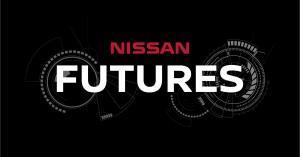
That's not all Nissan is doing. They will be the first major contributor to the vehicle-to-grid system, kicking off in the United Kingdom. Gareth Dunsmore, Electric Vehicles Director for Nissan Europe at the announcement event said: "Nissan has announced today something that is going to help revolutionise the car industry but the energy industry as well. We've launched the vehicle-to-grid (V2G) system with our partner ENEL. That will allow us to put in place a system to take energy out of your car and put it back into your home and put it back into the grid as well." He also says that customers will receive money of up to £600 a year in subsidies from their power provider. "The Nissan Leaf has energy to deliver up to two days of full energy to a house. If you put in everyone in the UK driving an electric car, essentially we could start turning off an entire coal-burning fuel station."
It has been said that the V2G initiative of which Nissan will be the first in the UK to contribute to, could save the country £2.4 billion in electricity costs by 2030. They have named these right-here-right-now energy endeavours the 'Nissan Futures' series.
Paul Willcox, Chairman of Nissan Europe said: "The creation of the 'Nissan Futures' series was born out of Nissan's deep desire to create a safer and more sustainable future for everyone. It's no longer enough for automakers to work in a silo. The challenges of tomorrow require solutions that transcend single industries or companies. That's why we're partnering with like-minded businesses from other sectors to deliver new solutions that support a more sustainable future." He also confidently said that in the next 10 years, the world will see more change in the industry than the past 100. "We are entering the decade of disruption and it's an opportunity for Nissan and the world around us to behave and act differently."
- Details
- Written by: Quintus Potgieter
Google has released a preview of what they have been busy with in the world of virtual reality. The video shows two artists using a virtual landscape as their canvas and create with the brush that equips them with the tools to create artworks.
On the website TiltBrush, there are more detailed views of what the software actually looks like the inside of the VR goggles. There are dynamic brushes that can paint a plethora of weird and wonderful looking things in the virtual world. Saving of snapshots looks fairly simple so that you can show a 2D representation of what you have been painting but can always launch back into the 3D world of your paintings. You can literally walk around your painting.
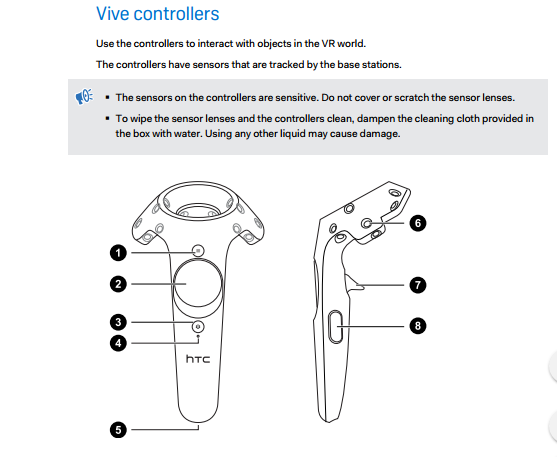
The TiltBrush is already conditioned to work with the HTC Vive and its controllers. You can read the set-up guide of how to use the HTC Vive to utilize Google TiltBrush with this handy pdf.
Another prerequisite is that Steam is required, so it seems that is the official app store they are launching the app to right now. The app is an impressive look into how software engineers will factor into the future of developing apps for virtual reality purposes.
- Details
- Written by: Quintus Potgieter
Good news out of MIT this week. They are actively trying to get rid of our wrinkled skin.
Daniel Anderson, associate professor at MIT said: "The goal was to really create something that was totally invisible, breathable, could coat the skin, protect it, perhaps deliver drugs to it and also perhaps even make it look better."
 Robert Langer, a chemical engineer, and professor at MIT, involved with the project, said: "What we've been able to do is create a cream, basically, that you could put on the skin and then once it's on the skin it can actually form, essentially, a second skin. And it's transparent, it's essentially invisible, it's not messy at all and has good mechanical strength."
Robert Langer, a chemical engineer, and professor at MIT, involved with the project, said: "What we've been able to do is create a cream, basically, that you could put on the skin and then once it's on the skin it can actually form, essentially, a second skin. And it's transparent, it's essentially invisible, it's not messy at all and has good mechanical strength."
Langer says the technology works in two stages: There is an invisible cream that a test subject can apply to their skin involving a polymer that binds the cream to the skin. The second step is applying a catalyst that causes a reaction on the skin. "You could use it in various different areas. One set of things might be in cosmetics where you use it to tighten skin on different parts of the body, another could be for therapeutics where you use it as a whole new plastic ointment that could be used to deliver drugs to the skin to treat different skin diseases," Langer said.

The second skin research has been a ten-year project that was conducted by scientists at MIT, Massachusetts General Hospital, Living Proof and Olivo Labs.
You can purchase and read the research conducted that has been published in the Nature journal.
- Details
- Written by: Quintus Potgieter
The next innovations and solutions to the United Kingdom and perhaps even the world's problems could be coming out of Cambridge University thanks to one man, Sir James Dyson. He has provided funds that will see the opening of the Dyson Centre for Engineering Design at Cambridge University. The Dyson company just recently released their brand new design for the re-engineered hair dryer, that might be taking the world by storm quite soon. Now with this announcement, the new engineering center, Dyson might be releasing all kinds of weird and wonderful engineered products.
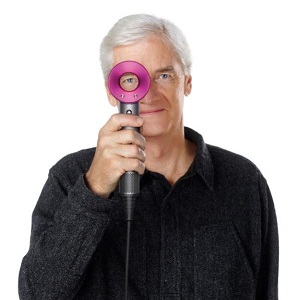
"It's economic suicide that we're not creating more engineers. They create the technologies that Britain can export, generating wealth for the nation. But we're facing a chronic shortage of them," said Dyson. The Royal Academy of Engineering - in 2015 already - spoke of a shortage of engineers in the UK, estimating that they would be short on engineers if they didn't produce more than a million in five years. This year, however, Britain faces a possible exit from the European Union, which experts warn, would set them back even further in engineering fields.
However, what is encouraging is that engineers who have made it in the industry - in Britain specifically - are now looking back and creating opportunities for engineers to continue creating. Dyson spoke to the Telegraph, saying: "Britain has a wonderful tradition of inventing technologies and products. Rutherford Appleton Labs has more Nobel Prizes per square inch than anywhere else in the world. But I wonder how long that will go on. Science and engineering are no longer subjects that young people here are interested in."
The center includes 3D printers, laser cutters, machine tooling areas and more, according to the Telegraph. The center allegedly cost £2.65 million for Dyson who says that the new center will achieve new breakthroughs and will change the way we live today. On top of that, the Dyson Foundation has put £60 million into encouraging younger people to embrace STEM subjects to lead to more engineers in the world.
Dyson also felt proud in the fact that his center will see a handful of women engineers. He said, "At the Dyson School of Design Engineering, 50 percent of its first intake of 44 students is female. That's a phenomenally high percentage and I'm thrilled. One of the tragedies of engineering is that so few are women."
- Details
- Written by: Quintus Potgieter
In an unsurprising move, Total, the French oil company, has decided to make a hefty bid to take over a battery maker named Saft Groupe SA. With the assistance of the French Financial Markets Authority, the two companies announced on Monday, that the battery maker would be bought for $1.082 billion. The acquiring of the company happens amidst a brand new branch recently launched by Total that will encourage cleaner practices of energy production.
Total has offered to pay $41.62 per share, which equals the amount of money they are being bought out for. Saft is also a French firm that specializes
 Total's Chief Executive, Patrick Pouyanné, said: "The acquisition of Saft is part of Total's ambition to accelerate its development in the field of renewable energy and electricity." Saft, according to their website, claims to have made $863 million in 2015, making them the world leader in advanced technology batteries. "The combination of Saft and Total will enable Saft to become the Group's spearhead in electricity storage.It will notably allow us to complement our portfolio with electricity storage solutions, a key component of the future growth of renewable energy."
Total's Chief Executive, Patrick Pouyanné, said: "The acquisition of Saft is part of Total's ambition to accelerate its development in the field of renewable energy and electricity." Saft, according to their website, claims to have made $863 million in 2015, making them the world leader in advanced technology batteries. "The combination of Saft and Total will enable Saft to become the Group's spearhead in electricity storage.It will notably allow us to complement our portfolio with electricity storage solutions, a key component of the future growth of renewable energy."
Yann Duchesne, chairman of Saft's Supervisory Board said in their statement: "We are delighted with this rapprochement, which was unanimously approved by the Supervisory Board thanks to its strong industrial rationale and its financial interest for our shareholders.
Elsewhere
Amidst Tesla officially releasing their Powerwall to U.S. households, a rival has entered the game. An Australian company has released their battery storage unit called the Enphase. The orders are now open and the company employs 1,000 installers to assist consumers in getting the units up and running in their households.

Nathan Dunn, managing director of Enphase Asia-Pacific told Gizmodo: "We believe the Enphase Home Energy Solution represents the most compelling and technologically advanced residential energy solution in the world today. In fact, it is the only complete energy system that we've seen to date and we expect the initial demand to be driven by installers looking to retrofit existing residential solar PV systems. Enphase expects the next wave of demand to be driven by new solar PV systems owners enticed by the elegance and simplicity of our solution."
The company is selling to Australia and New Zealand right now, however, they are focusing on the worldwide market just like Tesla has been doing. The first shipments are estimated to be happening in August and if you would like to contact an installer in your area, you can apply on their website: HERE. The interesting part of their product is that it can be added to pre-existing solar PV systems where some companies require their own PV systems to be used. It could be a draw card for some consumers who have already tried to remove themselves from the grid.
- Details
- Written by: Quintus Potgieter
Earlier in the year the Consumer Electronics Show, 2016 took place in Las Vegas, allowing electronics manufacturers to show off the new innovations they had been building up in their factories. An autonomous passenger drone by the name of EHang was teased as the first autonomous aerial vehicle in history. Since then, more and more engineers have been lending their minds to companies to create autonomous passenger vehicles that could potentially take to the sky.
The company behind EHang is upping the ante with its confident claim that they will be able to manufacture 1,000 drones for a company named Lung Biotechnology PBC. The company in question wants to design lungs and other artificial organs which can then be flown to hospitals in need. The drone will be renamed to the Manufactured Organ Transport Helicopter (MOTH) and will be the efficient vehicle that transports the organs.
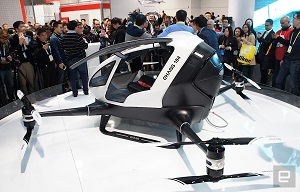
The EHang 184 carries a single person at a speed of 10 MPH to 65 MPH through the air. The company is also able to fly their drones at night, which would be beneficial for hospitals that are in need at odd times of the night or the morning. According to the team of engineers, the drone can be preprogrammed on a course within a 10-mile radius.
The company says: "Currently, organ transplants are limited by the number of brain-dead donors, which results in thousands of death on an organ transplant waiting lists each year."
The plans to launch this initiative might take a while seeing as though artificially designed organs are not yet a reality. Lung Biotechnology rakes in $700 million in yearly sales, according to Engadget. However, the companies are excited by the prospect of being able to transport the artificial organs of the future. The company is conducting research in the pig-to-human xenotransplantation and stem cell technology biomedical engineering industry. Once it is declared safe to use, if at all, the drones and the artificial organs will be flown around the clock and save lives. Or at least that's the intention.
- Details
- Written by: Quintus Potgieter
Graphene since its discovery in 2004 has been an investigated by engineers across the globe. Brazil is attempting to commercialize the material by opening a Graphene and Nanomaterials Research Center which will be called MackGraphe. Graphene is the thinnest compound that weighs in at one atom thick and is the lightest known, strongest compound ever discovered. So the desire to capitalize on the material and build into our everyday lives is of heightened interest to engineers and scientists all around the world. The honeycomb-like texture the material takes on, is also of importance to some engineering designers. Thus, the Mackenzie Presbyterian University in São Paulo wants to open the facility that will concern itself with graphene and see how it can be introduced into the world.
MackGraphe will actively work with nanomaterials, a team of 20 engineers will be lending their minds to the project. According to Chemistry World, the material will have eventual benefits for "electronics, biological engineering, filtration, energy storage" and the development of strong and non-heavy materials.
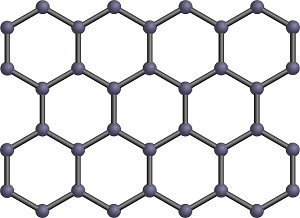 Brazil is late to the party, however, due to the University of Manchester in the UK, who have already invested money into the National Graphene Institute (NGI) that has been open for over a year. An inquiry was opened against the institute criticizing it for the speed at which revelations in the graphene industry are being made. It is alleged that the institute will not be able to take graphene from lab to the market anytime soon, which has alarmed government investors who have pumped £38 million into the research.
Brazil is late to the party, however, due to the University of Manchester in the UK, who have already invested money into the National Graphene Institute (NGI) that has been open for over a year. An inquiry was opened against the institute criticizing it for the speed at which revelations in the graphene industry are being made. It is alleged that the institute will not be able to take graphene from lab to the market anytime soon, which has alarmed government investors who have pumped £38 million into the research.
The University of Manchester replied to the claims that they were spending all their time on research and not so much on development. BGT Materials, a company involved with graphene development also said it was working on something but wouldn't divulge what. Their research and development manager, Liam Britnell, said: "We have definitely tried to keep under wraps what we're doing. There's no advantage to shout from the rooftops." The company was rumored to be working on a lightbulb that utilizes graphene to transfer heat from a light-emitting diode (LED) which would improve its efficiency, according to Nature.
There have also been 25,000 patent applications in graphene development between 2005 to 2014, according to the UK Intellectual Property Office, showing that graphene could soon be making its way into the newest product consumers will be getting their hands on.
- Details
- Written by: Quintus Potgieter
Interesting week for electric vehicles and the companies that are producing them. Tesla Motors Inc. has seen the exit of two top executives whilst they confidently stride forward to releasing the Tesla Model 3. Tesla initially said that they would be delivering the car at the end of 2017 and intend to push out 500,000 units a year by the year 2020.
Then Elon Musk (CEO of Tesla and SpaceX) decided to supercharge their initial statement in a conference call saying that they are ready to deliver 100,000 cars by the end of 2017 and will reach the 500,000 mark in 2018. According to Reuters, the company's shares jumped up by 5 percent when the announcement was made.
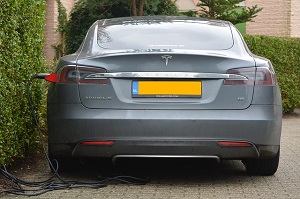 Musk said: "The key thing we need to achieve in the future is to also be the leader in manufacturing. It's the thing we obviously have to solve if we are going to scale and scale profitably." Critics have said that the company will not make the new goal they have set but are interested to see if it's possible. Musk notoriously said if they want to make half a million vehicles this year they would have to deplete the world's lithium-ion sources.
Musk said: "The key thing we need to achieve in the future is to also be the leader in manufacturing. It's the thing we obviously have to solve if we are going to scale and scale profitably." Critics have said that the company will not make the new goal they have set but are interested to see if it's possible. Musk notoriously said if they want to make half a million vehicles this year they would have to deplete the world's lithium-ion sources.
Elsewhere, Toyota is looking into its own alternative to lithium-ion and potentially throwing their weight behind magnesium. The engineer initially working on hydrogen storage at Toyota's Research Institute of North America (TRINA) says that her findings could be applied to a magnesium battery. The company says magnesium batteries could lead to longer lasting electric cars that travel further and go at a faster speed. The company also said that magnesium batteries could replace the batteries in the smartphones of today.
Toyota published its finding in a paper titled 'An Efficient Halogen-Free Electrolyte for Use in Rechargeable Magnesium Batteries '. The company
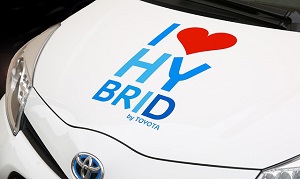
is playing it safe for now and saying that it could be an eventual solution because it has not yet perfected the use of a magnesium solution for powering vehicles. The issue they are having - that they detail in the abstract of their research paper - is the fact that the electrolytes in magnesium batteries are "corrosive toward metallic battery components." It doesn't do great around metals. However, Toyota is hellbent on continuing their research to potentially redefine the power source of electric vehicles in the not so distant future. The company - in a statement - said: "While it's easy to get caught up in the potential of a dramatically improved battery, it could take 20 years of research and development before magnesium batteries reach the consumer market."
The chemical engineer who made the discovery at Toyota, Rana Mohtadi, told media: "We were able to take a material that was only used in hydrogen storage and we made it practical and very competitive for magnesium battery chemistry. It was exciting."
- Details
- Written by: Quintus Potgieter
Researchers at the University of Michigan are calling a device they have used to imitate the "flow of medication" around a system similar to the human kidney, the 'kidney on a chip'.The device allows the researchers to determine how kidney cells would be affected by certain medications which could lead to a more accurate dosage of drugs for patients in the future. Overdosing a patient could lead to deaths and this engineered kidney simulation device is on its way to avoiding overdosage.
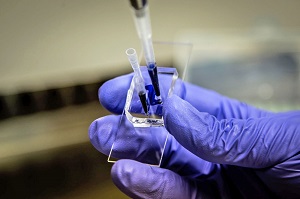
It has been reported that two-thirds of patients in the ICU have damaged kidneys when admitted. The problem is, up to twenty percent of these cases are due to medications that have damaged the kidney. This is because of the sort of medications that are given for kidney damage in ICU units of which some are considered toxic.
Shuichi Takayama, a professor of Biomedical Engineering at the University of Michigan said: "When you administer a drug, its concentration goes up quickly and it's gradually filtered out as it flows through the kidneys. A kidney on a chip enables us to simulate that filtering process, providing a much more accurate way to study how medications behave in the body."
The chip was made with what's called a permeable polyester membrane and a layer of actual kidney cells, sandwiched in between the microfluidic top and bottom parts. The device then simulates the environment of an actual kidney and delivers one large dose instead of one continuous dose of medicine. The idea is that one large dose kills fewer cells instead of one continuous dose that tends to kill more, according to the group's video.
The study was published in the IOP Science Journal under the title Pharmacokinetic profile that reduces nephrotoxicity of gentamicin in a perfused kidney-on-a-chip. In the abstract, the researchers say that the paper aims "to illustrate the potential to fill in such pharmacokinetic gaps between animals and humans using a microfluidic kidney model." This means the research will also be able to apply to animals' kidneys as well. Thus, human and animal lives could be saved as a result of the correct amount of drugs being administered at a time.
- Details
- Written by: Quintus Potgieter
Markit Economics and the Chartered Institute of Procurement & Supply has confirmed that Britain's construction sector is expanding at a slow rate. It hasn't expanded this slowly in three years the report said. According to IBTimes, it is the 36th month of expansion, however, it is the slowest construction output since 2013.
Britain has recently seen issues in the steel industry and is unsure about its future when the European Exit vote happens in June.
 Markit's senior economist Tim Moore, said: "Stalling new order volumes not only set the scene for further weakness ahead but are already weighing on staff hiring and input buying across the construction sector. Softer growth forecasts for the UK economy, alongside uncertainty ahead of the EU referendum, appear to have provided reasons for clients to delay major spending decisions until the fog has lifted."
Markit's senior economist Tim Moore, said: "Stalling new order volumes not only set the scene for further weakness ahead but are already weighing on staff hiring and input buying across the construction sector. Softer growth forecasts for the UK economy, alongside uncertainty ahead of the EU referendum, appear to have provided reasons for clients to delay major spending decisions until the fog has lifted."
Markit also reported that confidence in the sector is also not high and is also hurting the industry. The unwillingness of companies ordering new projects will not improve the situation, it will only make it worse. The Bank of England warns that the EU referendum is mostly to blame and it would be beneficial for Britain not to exit the European Union to ensure that engineering sectors remain protected.
George Osborne said: "Investments and building are be delayed, and another group of international experts, the OECD confirms British families would be worse off if leave the EU."
Comparatively, the United States' construction industry has grown to an 8 and a half year high. Their industry hit the highest level since October 2007.
- Details
- Written by: Quintus Potgieter
The United Arab Emirates is planning to take civil engineering to a whole new level. The engineers of the country plan to build a man-made mountain to produce rainfall. The hope is that with a mountain range effect, they will be able to cloud-seed the area. Cloud-seeding refers to weather modification that can increase the amount of rainfall in an area.
The UAE has already invested US$11 million into cloud-seeding efforts in the past which have allegedly shown results but it seems the country wants to do more.
 The country will be working along with the University Corporation for Atmospheric Research (UCAR) who operate out of the United States of America. The researchers there say they are working through a "detailed modelling study" of potentially building a man-made mountain to attempt to increase rainfall in the UAE, known for its dry conditions.
The country will be working along with the University Corporation for Atmospheric Research (UCAR) who operate out of the United States of America. The researchers there say they are working through a "detailed modelling study" of potentially building a man-made mountain to attempt to increase rainfall in the UAE, known for its dry conditions.
"Building a mountain is not a simple thing. We are still busy finalising assimilation, so we are doing a spread of all kinds of heights, widths and locations [as we simultaneously] look at the local climatology," said Roelof Bruintjies, an expert in weather modification from the National Centre for Atmospheric Research told Arabain Business.
Steve Mackay, the Dean of Engineering at the Engineering Institute of Technology calls endeavours of this kind: engineering with the natural order of things. In his YouTube series, the Engineering News Network, he encourages engineers to use the natural order of things to work more efficiently. He says: " Try and use the environment to make your job easier when doing your engineering design...Try and use the natural order of your environment to do a lot of the work for you." However, the building of a mountain would be engineering a seemingly natural object to work alongside the natural order of things, tweaking how the natural order operates but not in an invasive way. In addition, the engineering of something that could assist a community and improve it is a good thing.
Bruintjies further explained: "What we are looking at is basically evaluating the effects on weather through the type of mountain, how high it should be and how the slopes should be. We will have a report of the first phase this summer as an initial step." The hope is that just like mountain ranges in the actual world, the weather will be modified to the point where more rainfall is produced.
- Details
- Written by: Quintus Potgieter
Researchers at Oregon State University in the United States have discovered a new method of boiling water that utilizes new technology. They have published their findings in the Scientific Reports journal under the title Large-scale Generation of Patterned Bubble Arrays on Printed Bi-functional Boiling Surfaces.
The researchers investigated bubble nucleation control to attempt to enhance boiling heat transfer performance, according to the abstract of their report.
We report a novel bi-functional heterogenous surface structure that is capable of tuning bubble nucleation, growth and departure dynamics.
Heterogenous surfaces with various configurations were fabricated and their bubble dynamics were examined at elevated heat flux, revealing various nucleate boiling phenomena. In particular, aligned and patterned bubbles with a tunable departure frequency and diamater were demonstrated in a boiling experiement for the first time.
The researchers have filed a patent application for the method they have discovered. The researchers say the method includes the boiling of water and the creation of steam.
Chih-hung Chang, a professor of electrical engineering at the OSU College of Engineering said: "One of the key limitations of electronic devices is the heat they generate, and something that helps dissipate that heat will help them operate at faster speeds and prevent failure. The more bubbles you can generate, the more cooling you can achieve."
Engineering the wettability contrast of the surface holds great potential to enhance the heat transfer in both boiling and condensation proccesses.
The bi-functional boiling surfaces were fabricated on large-size stainless steel substrates using fleible and scalable approach in contrast to much more expensive photolithography and etching processes.
The discoveries the team has made will allegedly assist industrial-sized steam boilers achieve their goals more efficiently and will have an effect on electricity production in electric generating facilities, according to Science Daily.
The newly discovered method enables the engineers to induce and control boiling bubble formations. They showed the possibilities of this by forming bubbles in the letters 'USO'.
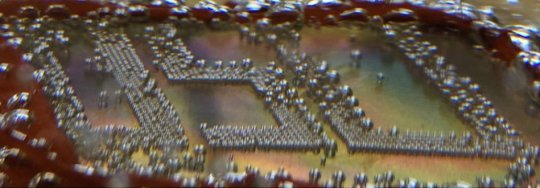
- Details
- Written by: Quintus Potgieter
Geospatial engineering is a recent addition to the list of engineering roles you could find yourself in if you have an affinity for circumnavigating the world of civil engineering. These engineers are currently trying to imagine the introduction of European-styled roundabouts for the United States of America. the engineers would work closely with civil engineers, town planners and the like, to plan out how to design roads so that traffic and accidents are significantly lower.
According to The Economist, America only has 4,800 roundabouts in the entire country and says that a quarter of road deaths occur in intersections.
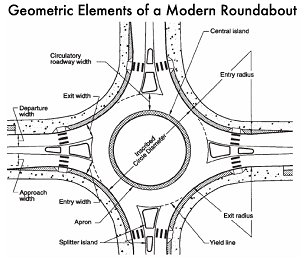
Explaining why there is a lack of roundabouts in the States, Lee Rodegerdts, an international roundabout expert at the Portland transportation engineering and planning group, told CityLab: "My guess is that the possible benefits of roundabouts weren't widely known, and we had a long history of using traffic signals. It took some bold people -- both on the elected-official side and on the transportation professional side -- to get the first ones installed, and they deserve a lot of credit for sticking their necks out there.
Steve Mackay, the Dean of Engineering at the Engineering Insitute of Technology believes American engineers did not align themselves with the KISS (Keep It Simple Stupid) principle. He implies that they did not see the facts and figures to see how beneficial roundabouts would have been for the United States, instead of their complicated, more unsafe, four-way intersections. Engineers at Kansas State University discovered that delays were 65% less at roundabouts.
Mackay, in the YouTube series Engineering News Network, said: "Roundabouts reduce your delays by 90% compared to the four-way intersections. Accidents are down by 80%, this is actually research proven. Considerably simpler. There are far fewer conflict points in a roundabout compared to a four-way intersection."
Mackay also speaks of the angle of collision in a roundabout in comparison to the American alternative. He says, "If you do have an accident in a roundabout, it's at an angle so the actual impact would be lower than in a four-way intersection. From a financial point of view, which is an area which we often neglect as engineers - dare I say - your return on investment for a roundabout is about eight times greater than that of a four-way intersection."
Amsterdam has even added a special ring for cyclists who are given the right of way to make the roundabouts safer for them. This is something missing from some recent adopters of the roundabout who are now trying to build cities with bicycle lanes and roundabouts that maintain a flow of traffic with the right of way rules for cyclists due to bicycle and car-related incidents in the past.
- Details
- Written by: Quintus Potgieter
Skycatch is a drone data software company in the United States who's tagline is: Connecting people and machines to the real-time physical world. It is a tagline that indicates what the future of construction could look like. Machines doing what the people would be doing in real-time. The company recently received funding to the tune of $22 million that would see them producing hardware and software for unmanned aerial vehicles that would assist with civil engineering endeavours.
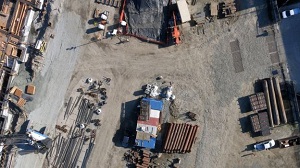
According to BBC News, a Japanese construction company named Komatsu is taking Skycatch's hardware and software further by implementing the technology into automated bulldozers. Reportedly, the drones would deliver a 3D model of a building to a computer and then the information is sent to the unmanned machinery so that it can successfully do its job on a construction site.
The drones look down on a construction site and can produce data about the site for the civil engineers that would be able to estimate how long a job is going to take based on the analytics.
Skycatch's chief executive, Christian Sanz, spoke to BBC, saying: "The more visible data that you have on a site, the more you'll see machines and robots moving things around rather than humans."
Mapping a site has never been easier than with the drones that scan the entire site and turn into a virtual design that is easily accessible to the civil engineers to peruse. "With the former, traditional method, it takes about two weeks, on average, to survey a certain piece of land. Meanwhile, with Skycatch it can be completely down within one day, or even 30 minutes," says Kenishi Nishihara, a project manager with the Smart Construction division.
A website called Wise Guy Reports has compiled a 60-page report that states that the global market research they conducted on the civil construction industry revealed that the global market for construction robots will grow by more than 5% by 2020. The report also said that Japan is the pioneer of the application of robots in the automated construction industry. So it is no surprise that Komatsu is interested in Skycatch.
Alternatively, Technavio also released a reported titled Global Mobile Robotics Market 2016-2020 and estimated that the robotics market would spike by 12% by 2020.
Komatsu is calling their drone-ground-scanning-bulldozer-navigating initiative is being called 'Smart Construction'. Martin Schulz, an economist at Fujitsu Research Institute in Tokyo, spoke to Bloomberg last year, saying: "The labor shortage in the construction industry could reach a crisis level in the next few years."
- Details
- Written by: Quintus Potgieter
Germany divides its renewable energy consumption into six categories. Hydropower, wind energy, solar energy, geothermal energy, biomass and waste. The country also consumed more oil than coal in 2015, according to the AGEB's Energy Consumption Report of 2015. The PDF is available to read through, to see how far Germany is from ditching non-renewable sources of energy and how they move into the renewable energy age.
In the report it is stated:
In 2015, the use of renewable energy in private households, industry as well as the trade, commerce, and service sector increased by 6.2% whch was primarily due to the cooler weather (albeit still at a comparably low level)
When it comes to the use of renewable energy in electricity production, wind energy exhibited by the far the greatest increase with a plus of 50% compared to 2014 which was due to the strong wind year and the additionally installed capacity of 6GW
 Reuters says coal still produces 40 percent of the current energy being produced in Germany and cuts in the sector will equal unemployment in the industry. Now a draft document to be processed through government will make them stick to an outline of increasing green energy production by 75% by 2030. Today, Reuters has released a report saying that Germany could be leaving coal-fired power production before 2050. The government of Germany is also reportedly supposed to decide on a climate action plan for 2050 and must outline their renewable energy portfolio. Recently, critics have doubted Germany will be lending themselves to photovoltaic cells as a source of energy as freely as forward-thinking countries like Australia, for example.
Reuters says coal still produces 40 percent of the current energy being produced in Germany and cuts in the sector will equal unemployment in the industry. Now a draft document to be processed through government will make them stick to an outline of increasing green energy production by 75% by 2030. Today, Reuters has released a report saying that Germany could be leaving coal-fired power production before 2050. The government of Germany is also reportedly supposed to decide on a climate action plan for 2050 and must outline their renewable energy portfolio. Recently, critics have doubted Germany will be lending themselves to photovoltaic cells as a source of energy as freely as forward-thinking countries like Australia, for example.
By March of this year (2016), Belgium follows a list of European territories who are closing their coal powered power stations. EcoWatch confirms Belgium successfully closed down their Langerlo plant
Joanna Flisowska, an employee of the Climate Action Network told EcoWatch: "Ending coal power use in Belgium marks a significant step in the inevitable transition away from fossil fuels."
The rest of the world is watching as Europe tweaks its renewable energy resources and policies that pertain to them and will learn from them. Currently leading the charge in the renewable energy sources is Britain. But the other European countries are trying to get in line as well for the betterment of the environment. Engineers in the coal industry should be watching the changes in the energy sector quite closely as more and more countries decide to move towards being aligned with renewable energy sources.
- Details
- Written by: Quintus Potgieter
It was just the other day when tech leaders all converged on Barcelona for the Mobile World Congress in February. The hot topic was the inevitable Internet of Things and what kind of internet connections the world is going to have to have to accommodate it. The word of caution was that 5G networks would have to be here by 2020, which analysts are estimating as the year that IoT reaches its full potential. You can read our story on that HERE. The world now faces connectivity issues for virtual reality, self-driving cars, home appliances, automated industrial plants and more if the move to 5G is not made.
QZ spoke to Asha Keddy, general manager of mobile standards for advanced tech at Intel. She said:
"These next-generation networks and standards will need to solve a more complex challenge of combining communications and computing together so intelligence is at your fingertips and available to the machines that make up the internet of things. The 2G networks were designed for voice, 3G for voice and data, and 4G for broadband internet experiences. With 5G, we'll see computing capabilities getting fused with communications everywhere, so trillions of things like wearable devices don't have to worry about computing power because network can do any processing needed."
 In the United States this summer, Verizon, and AT&T are planning to test out their 5G networks. According to Bloomberg, 5G networks will be generation billions of dollars for the early adopters such as Nokia, Oyj, Ericsson, Qualcomm Inc. and of course the aforementioned Intel.
In the United States this summer, Verizon, and AT&T are planning to test out their 5G networks. According to Bloomberg, 5G networks will be generation billions of dollars for the early adopters such as Nokia, Oyj, Ericsson, Qualcomm Inc. and of course the aforementioned Intel.
Chief Executive Officer Hans Vestberg, told Bloomberg: "5G is not about another G with super-fast Internet. 5G is about beyond smartphones and tablets. We think 5G could provide an excellent opportunity to transform our world."
The global expenditure on 5G networks will be $400 billion says Chetan Sharma Consulting. AT&T will be one of the first mobile operators to test out the technology. According to DSLReports, the first round of tests will be happening in Austin and New Jersey. They will be testing "millimeter wave components and/or modified existing millimeter radios." Tom Keathley, SVP of Wireless Network Architecture & Design at AT&T said the testing will start at 15GHz and move up to 28GHz.
Even Facebook is relying on the rollout of 5G being successful. Facebook's vice president of engineering said: "The hope is that this will lead to better wireless networks -- wireless networks that can keep up with all the stuff we're doing on our cell phones, from listening to music and watching videos too, yes, diving into virtual reality. These really immersive experiences are all looming."
For a clearer picture of how 5G will be assisting the Internet of Things, check out this video:
- Details
- Written by: Quintus Potgieter
An estimated 34 billion devices will be connected to the internet by 2020. The current number was 10 billion in 2015. IoT devices will make up 24 billion of the 34 billion.
- $6 trillion will be spent on IoT systems over the next five years.
- Businesses will be a top adopter of IoT solutions. For business, IoT will: 1) lower operating costs ; 2) increase productivity and 3) expand to new markets or develop new product offerings.
- Governments are focused on increasing productivity, decreasing costs, and improving their citizens' quality of life. They will be another huge adopter.
- Consumers will lag behind business and government in IoT adoption.

Gartner Research has also reported that there will be 500 networked devices connected by 2020. And Ericsson also said that they expect 50 billion connected IoT devices in 2020 as well. Jumping into the game as well were Intel and Samsung who announced the launching of their own cloud services to join the long list of companies functioning from the cloud.
Jim Tully, the Vice President of the Internet of Things at Gartner, spoke about the benefit of businesses implementing IoT strategies. In a weekly magazine show for Gartner, he said: "From surveys, we find that most of the roles that we speak with - in enterprises - have all heard of IoT. It's a familiar term. Relatively few enterprises have actually used IoT yet. That's largely because most of those enterprises don't see how IoT could lead to business benefits for their kind of organization."
Tully says the biggest issue that delays IoT solutions from picking up and could delay the numbers in 2020, is purely just the fact that it is new. He says the concepts are unfamiliar to enterprises and that is the confusing part for a lot of companies.
The importance of IoT in the future of manufacturing is said to be thrusting the world into another industrial revolution, and if companies do not adapt, they will be left behind. At least that is what the industry is saying and how fast the adoption of the Internet of Things is happening.
To find out why the Internet of Things is going to be invaluable in the manufacturing industry, Intel shows examples of how they would be powering a factory setup along with the Internet of Things:
- Details
- Written by: Quintus Potgieter
Researchers at the University of Minnesota have written a report in Physics of Fluid that make a case for a change of methodology when studying turbulence pertaining to jets.
The researchers say that fluid flows in predictable patterns with high-speed jets which explain why jets are so loud. The team wants to use their findings to influence the dynamics of jets to minimize the volumes they produce.
Joseph W. Nichols, an assistant professor of aerospace engineering and mechanics at the University of Minnesota, spoke to Eureka Alert, saying, "Back during the 1960s, it was shown that coherent parts of turbulent fluctuations inside jets are connected to instability wavepackets, which are linked to noise radiation. A wave packet is an oscillation that repeats if you look at it over a short time and length scales, but when you zoom out you can see it varies slowly over a long distance."
The abstract published by the team explains:
For supersonic jets, the optimal response closely resembles a wavepacket in both the near-field and the far-field such as those obtained by the parabolized stability equations, and this mode dominates the response. For subsonic jets, however, the singular values indicate that the contribution of sub-optimal modes to noise generation are nearly equal to that of the optimal mode, explaining why the PSE do not fully capture the far-field sound in this case.
 Mihailo Jovanovi, an associate professor of electrical and computer engineering, said: "We treat high-speed turbulent jets as amplifiers that take fluctuations inside the jet as inputs and give back sound. And we use this mathematical framework to identify modes that induce large-output amplification and generate loud noise."
Mihailo Jovanovi, an associate professor of electrical and computer engineering, said: "We treat high-speed turbulent jets as amplifiers that take fluctuations inside the jet as inputs and give back sound. And we use this mathematical framework to identify modes that induce large-output amplification and generate loud noise."
The studies into quietening down jet planes could lead to healthier airport staff, say the researchers. It was confirmed by health professionals last year that exposure to loud aircraft could lead to heightened blood pressure.
- Details
- Written by: Quintus Potgieter
Aerospace engineering will reach another milestone when SpaceX and NASA launch the Red Dragon on a mission to reach Mars. Elon Musk has announced that by May 2018, they want to be prepped and ready to go to Mars. The mission will see a bigger version of the Falcon 9 - which successfully landed itself on a barge earlier this year - known as the Red Dragon, enable a capsule to land on the surface of Mars.
The end game for SpaceX would be getting more spacecraft to Mars and starting a colony on the planet. Musk is planning to let the media in on their plans for colonization of Mars in September. This keynote will happen at the International Aeronautical Congress in Mexico.

The 2018 launch will be an unmanned launch and will see the Red Dragon travel to Mars and attempt to land on the surface. According to Musk's twitter, the engineer said: "Dragon 2 [the spacecraft travelling to Mars] is designed to be able to land anywhere in the solar system. Red Dragon Mars missions are the first test flight." This means that Mars is not the only planet SpaceX is considering.
"Building on an existing no-funds-exchanged collaboration with SpaceX, NASA will provide technical support for the firm's plan to attempt to land an uncrewed Dragon 2 spacecraft on Mars. This collaboration could provide valuable energy entry, descent, and landing data to NASA for our journey to Mars while providing support to American industry," NASA said in a statement.
NASA intends to take humans to Mars by 2030, hence their involvement in the SpaceX launch. Both companies want to theoretically entertain the idea of sending humans to the Red Planet and the data that comes from this mission would be beneficial to both of them.
SpaceX has also announced they were successfully awarded an $83 million contract to launch a GPS satellite into space, funded by the US Air Force. Lockheed Martin, an aerospace engineering and design company - who are busy working on the next Concord-like aircraft - used to be the only company entrusted with space launches but it seems SpaceX's recent successes in the industry has changed the game up.
A Lieutenant General Samuel Greaves, head of the air force's Space and Missile Systems Centre, told the Guardian: "This GPS III launch services contract award achieves a balance between mission success, meeting operational needs, lowering launch costs, and reintroducing competition for national security space missions."
- Details
- Written by: Quintus Potgieter
The immediate future of energy storage is not the full replacement of the grid but rather the alleviating of strain on the grid through the use of batteries. Territories such as the United Kingdom, the United States, and Australia have been early adopters of energy storage technology and are looking forward to using battery technology during peak grid times, thereby, saving money and allowing the grid to operate optimally.
However, Germany is not as convinced that battery storage technology is for them. According to GreenTechMedia, a study named Merit Order for Energy Storage Systems 2030 was conducted over a three-year period by the Federal Ministry of Economic Affairs and Energy.
 Christoph Pellinger, who led the study, says that they believe energy storage batteries will not be able to meet Germany's energy requirements in the next ten years. He went on to say, "I can think of lithium-ion battery storage for primary frequency control: however, the market is rather small, with less than 600 megawatts in Germany and 3,000 megawatts in Europe. So far we do not see batteries on the grid scale for load-shifting purposes in Germany."
Christoph Pellinger, who led the study, says that they believe energy storage batteries will not be able to meet Germany's energy requirements in the next ten years. He went on to say, "I can think of lithium-ion battery storage for primary frequency control: however, the market is rather small, with less than 600 megawatts in Germany and 3,000 megawatts in Europe. So far we do not see batteries on the grid scale for load-shifting purposes in Germany."
The report - to be published soon - will suggest practical energy saving methods to ensure Germany stays on track in terms of energy goals. Other countries weighing up their energy options might be able to learn from Germany if they can produce renewable energy without the oncoming onslaught of battery technology.
The three suggestions to the German government, in the case of energy conservation, will be:
- Residential and industrial power-to-heat systems
- Demand-side management of industrial and residential energy consumption
- Vehicle-to-grid technologies - which has also recently been suggested at train stations in the United Kingdom. The idea is that electric cars would be parked in train stations the entire day, hence, they would be plugged into a network that would assist the grid using the energy storage technologies inside the cars.
Demand-side management is used around the globe to encourage consumers to change their usage practices to alleviate strain on the grid. The process of demand-side management is usually performed during peak hours when everyone is at home and utilizing energy-heavy appliances.
If countries continue the demand-side management methods of grid balancing far into the future, the Dean of Engineering at the Engineering Institute of Technology, Steve Mackay, says there are methods of energy saving which are severely underrated.
In the twenty-first episode of the Engineering News Network, Mackay says that the use of energy saving bulbs has been a successful idea with a good approach, however, he believes energy saving bulbs have been a yardstick that is possibly not long enough for how much energy saving actually has to happen in the world. "Humans tend to have a psychological effect called the 'anchoring effect' and we tend to focus on the little things. One should also expand one's horizon and perhaps think of larger things," he said.
In the current world where affording home energy storage batteries is a pipe dream for some, energy saving solutions still need to be considered. "For example, if you look at your home, one of the biggest savings you could make is not so much the light bulbs, but the heater or the dryer for your clothing. If you cut back on that, you are looking at significant savings because it chews up quite a lot of power. The same thing for your pool pump and lots of other power consuming devices," Mackay said.
Pellinger - who is soon to publish findings on grid balancing in Germany - has his doubts about residential batteries become the norm in the near future. He said: "Batteries for residential storage might have an impact, but they are even less economically viable than most analysts think. Home storage units often consume a surprising amount of electricity themselves in standby mode, and this is rarely taken into account."
- Details
- Written by: Quintus Potgieter
The interconnectivity of the components in a factory. This used to mean all the engineers and assembly line workers being on the same page. These days it means connecting the robots on the assembly line to an Internet of Things network so that they can talk to each other and ensure the assembly line keeps working in accordance with its coding.
Dynamic Group is a medical devices and precision products manufacturer in the United States and is also in the process of automating some of its assembly lines with the help of robotics. They have installed three robots that take care of repetitive tasks.
Joe McGillivray, the CEO of Dynamic Group said: "One of the main reasons we needed to look towards automation was difficulty with staffing. We're lucky enough to live in a place that has high wages and low unemployment which is great on a daily basis, normally, but it's difficult as someone who runs a business."
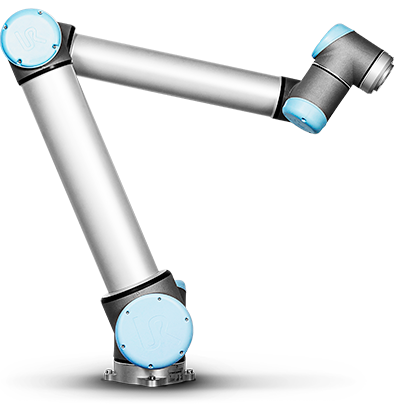
Dynamic Group says that the robots have increased productivity by 400% inside the factory. McGillivray says that this is because usually there would have to be three operators in the factory on a shift but now with the robots present there can be one operator on one shift.
"We essentially quadrupled our production capacity," said McGillivray.
The industry robot they utilize is the UR10 robot from Universal Robots. It is the largest industrial robot arm that Universal supply and can lift weights of up to 22 lbs.
The fact of the matter is that if multiple robots are going to be installed into a factory, they must be interconnected through the Industrial Internet of Things. To calculate what effect the automated industrial revolution might have on the industrial industry, Morgan Stanley Research, and Automation World investigated.
It resulted in a statistic that stipulated that industrial companies' IIoT (Industrial Internet of Things) expenditure would increase from its current 8 percent to 18 percent over the next five years. The report also said that "discrete automation is expected to see the greatest [IIoT-related] growth opportunities given faster upgrade/replacement cycles and lower penetration of software compared to the process industries."
- Details
- Written by: Quintus Potgieter
Engineers and birds have an odd relationship. There is a recent fascination with what birds could teach us about building new aircraft or drones for that matter. Stanford University has joined the craze and has built a wind tunnel for birds and drones to test aerodynamics and how birds react to turbulence.
Dan Quinn, a postdoctoral research fellow says, "Birds are masters of maneuverability in ways that we are only beginning to understand."
 "Birds can dramatically change the shape of their wings almost instantly and respond in that way very quickly. Flying in turbulence, avoiding obstacles and also flying very effectively over long distances," says David Lentink, mechanical engineering professor at Stanford.
"Birds can dramatically change the shape of their wings almost instantly and respond in that way very quickly. Flying in turbulence, avoiding obstacles and also flying very effectively over long distances," says David Lentink, mechanical engineering professor at Stanford.
The wind tunnel that the team of researchers built can alter turbulence and will cause birds to avoid and dodge the winds in the tunnel. This would allow the researchers to understand how they do this and perhaps publish the findings which could lead to drones dodging turbulence in expert ways in the future, inspired by nature.
The wind tunnel will push out gusts of winds up to 15 metres per second at maximum. Then a host of windows around the tunnel allow the researchers to peek inside the wind tunnel but they have also set up high-speed cameras so that they can capture slow motion video. A fluoroscope is used to observe the skeletal movements that are occurring in birds during flight in the wind tunnel. The fluoroscope is basically an X-ray machine that will show the bird in real time.
"The tunnel is designed to be super low turbulence but we also want to study how birds fly in turbulence and how we design vehicles that are more stable in turbulence. We can actually not only control how strong the turbulence is but where the turbulence is inside the tunnel," said Quinn.
Similarly, UCLA and its engineers are also studying bird flight to eventually try and turn into aircraft design.
Daniel Inman, a professor of aerospace at the University of Michigan, is working with the team over at UCLA, who have been given a $6 million grant to observe bird flight and invent materials that are flexible enough to react to wind like bird wings do. He said: "With new materials, advanced sensing and control techniques, and inventive methods for observing birds in flight, our team will begin to bring avian efficiency and agility to aircraft."
- Details
- Written by: Quintus Potgieter
The Nevada desert seems to be the latest hub of energy generation. Tesla has built their new Gigafactory dedicated to the production of lithium-ion batteries and Crescent Dunes, a solar power facility, supplies energy to approximately 75,000 homes. It is both beautiful to look at and revolutionary for energy generation in the world today.
The company behind the behemoth facility is SolarReserve, that employs engineers around the clock to maintain the facility. According to the company's website they employ around 4,300 people with the running of the facility. The biggest draw card that highlights this facility's usefulness is that it can even store energy during overcast weather and even operate at night, which makes the plant invaluable.
 SolarReserve's CEO, Kevin Smith, told TIME magazine, "This is the first utility-scale facility in the world with this technology. Our technology can truly replace conventional generation."
SolarReserve's CEO, Kevin Smith, told TIME magazine, "This is the first utility-scale facility in the world with this technology. Our technology can truly replace conventional generation."
Other solar facilities suffer under weather conditions, slowing down the storing and producing of energy due to the panels requiring sun.
The Crescent Dune plant uses its mirrors to reflect light into the central tower, which then heats up the liquid salt that stores the heat and turning it into a battery. TIME confirms that the plant produces "zero tons" of carbon.
Professor Jay Apt of the Carnegie Mellon Electricity Industry Center, said: "We're all hoping that, just like photovoltaic power, we'll start getting on the downward slope of the learning curve. If you crank a whole lot of those units, you'll learn to do it better."
The company is hoping that the facility can set an example for the rest of the world, and perhaps the world will follow suit and set up their own facilities that utilize molten salt power generation.
- Details
- Written by: Quintus Potgieter
At the University of Central Florida, a junior electrical engineering major has invented something that would alert a car owner when their wheels have been tampered with or in the worst case scenario, stolen. According to Central Flordia Future, there were five instances of vehicle tire theft or tire tampering since 2015.
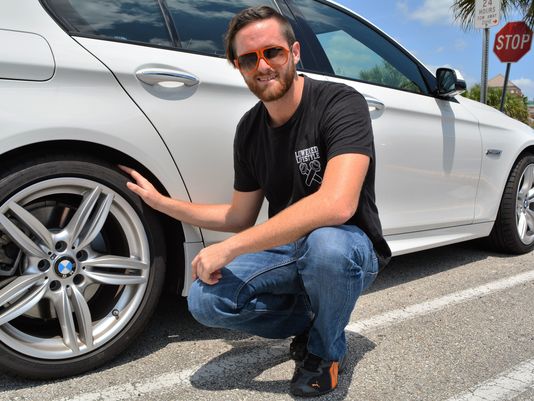
Matt White, the engineer behind the device, said: "I noticed in the beginning, ending and kind of in the middle of every semester some wheels would go missing here on campus from cars. I thought to myself 'What solution, what would be useful for students, for young professionals, for people that park outside with nice wheels or even stock wheel and brand new tires?"
The idea is a tracking device that utilizes Google Maps to track down the stolen wheels' location in real time. He coded an app that would show a user when the tires were stolen and how far away they are from their immediate location. White also wants to try and get the police involved so that the app can send out an alert to the policeman to alert them that tire theft is occurring.
"Having something such as a tire pressure monitor-looking device...securely strapped into the wheel and actually be able to tell and track where the wheel is up to a certain number of hours, of course, because of battery life. It could be one day or five days depending on how often the coordinates are pulled."
He has given the device a name: TrakSURE.
What White doesn't realize is how big tire theft is around the world, especially in countries like South Africa. His invention could revolutionize tire theft statistics if he took it international.
The UCF College of Engineering & Computer Science tries to assist its innovators at bringing products to the market and will try and get White's product into the market.
White's mentor, Oscar Rodriguez, said: "...there seems to be a real need in the marketplace, and yet, what I find interesting, is that after doing a lot of searching, there doesn't seem to be a solution that's already out there. So it's kind of ripe. The demand is there."
- Details
- Written by: Quintus Potgieter
Canadian researchers at the University of Toronto are showing off a new method of renewable energy storage that utilizes the laws of photosynthesis as it happens in nature. Mimicking the process of photosynthesis will allegedly lead to a sustainable, renewable answer to energy storage on a grand scale.
The University of Toronto's Faculty of Applied Science and Engineering is behind this and has created a device to put their hypothesis to work. The device splits water into hydrogen and oxygen - like plants do - leading to what the team says is the most efficient way of storing energy in a chemical form.
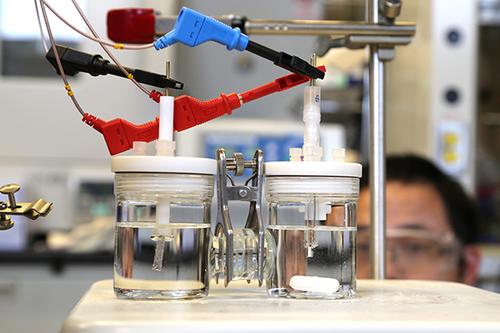
Edward Sargent, a professor in the Department of Electrical and Computer Engineering, spoke to DesignNews, and said: "The research identifies a new path to split water using electricity from renewable sources, such as solar and wind. The improvement in this new catalyst is that it significantly reduces the energy required to split water at a high rate -- a high intensity of fuel electrosynthesis."
The team thinks the device could change the way energy produced by solar and wind is stored. Lithium-ion batteries are used to store and the team is sure that their invention can compliment the current hunger for renewable energy storage.
Sargent said: "A kilowatt hour of electrical power could be stored with less total loss -- i.e. it could come closer to being a stored kilowatt hour. This would in turn improve the cost-effectiveness of storage, since people are generally willing to pay a certain rate for a retrieved kilowatt hour, so the energy storage round-trip efficient contributes directly to cost-effectiveness."
- Details
- Written by: Quintus Potgieter
Engineers at The University of Wisconsin-Madison are into precision. How can you tell? They've created the slimmest, most flexible, silicon transistor ever. At the helm of the project is Zhenqiang Ma, who has shown off the transistor that works at 38 gigahertz, but could theoretically achieve 110 gigahertz. This means it is capable of computing speeds above smartphones.
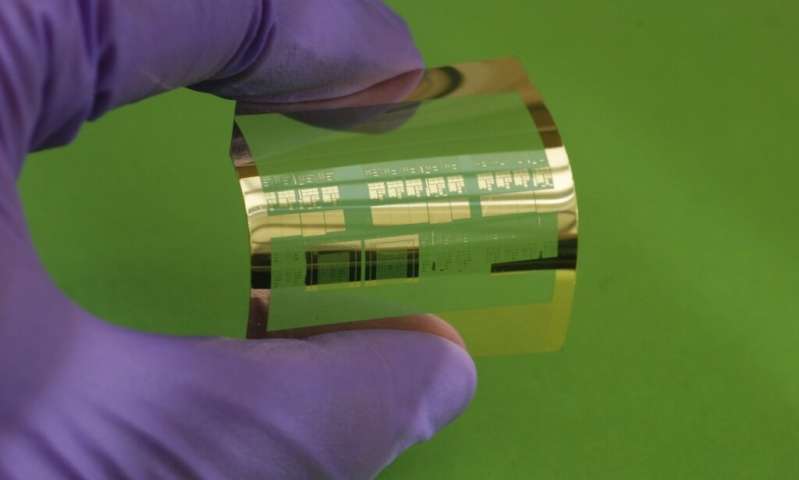
The findings were reported in the Scientific Reports journal. The slim, plastic transistor will have uncountable benefits for wearable technologies that are becoming more popular in the world today. The silicon-based transistor uses nanoscale fabrication methods at a low temperature. Then with a small knife, the patterns are cut into it based on where the manufacturer wants the circuitry to be placed.
Added to it are light-sensitive material and utilizes a technique called electron-beam lithography. According to Phys.org, the method includes a "focused beam of electrons to create shapes as narrow as 10 nanometers wide".
"Nanoimprint lithography addresses the future applications for flexible electronics. We don't want to make them the way the semiconductor industry does now. Our step, which is most critical for roll-to-roll printing, is ready," said Ma.
Ma admits that the demand for small devices with increased battery life is what is governing the way forward for flexible silicon conductors like these to exist. The engineers also say the chip will have biomedical engineering uses as well.
Ma says that they due to their flexibility "you can put them anywhere you want - on your skin, your clothes, wherever."
- Details
- Written by: Quintus Potgieter
News from the United States confirms The Senate has passed a bill that will see the country's power grid modernized and also have an effect on liquefied natural gas exports. The bill will see security measures put in place that would protect the U.S.'s power grid from weather interference and from cyber attacks. The bill further makes provisions for energy storage in wind and solar energy solutions.
 The act will be signed into law by President Barack Obama, which would make governments around the world contemplate their power grids and energy storage solutions. The bill in question is named The Energy Policy and Modernization Act and will also ensure the U.S. exports liquefied natural gas (LNG) faster than current nations such as Russia.
The act will be signed into law by President Barack Obama, which would make governments around the world contemplate their power grids and energy storage solutions. The bill in question is named The Energy Policy and Modernization Act and will also ensure the U.S. exports liquefied natural gas (LNG) faster than current nations such as Russia.
According to Reuters, the bill would see the Department of Energy issuing decisions on LNG projects within "45 days of environmental assessment", but as the bill progresses, that number will change to 30 days. Democrats are applauding the passing of the bill and looking forward to the energy future the United States can now look forward to.
Heads of industry in LNG industries are also saying that the move is a "big step forward".
- Details
- Written by: Quintus Potgieter
FANUC Corp. is a Japanese company that announced that it has created a network that will connect robots over IIoT (Industrial Internet of Things) that will set the bar for other factories of the future to aim for.
The new solution for factories by FANUC will ensure that robots stay connected to a network and work together in an industrial factory layout and will be able to present analytics data for a company's perusal.
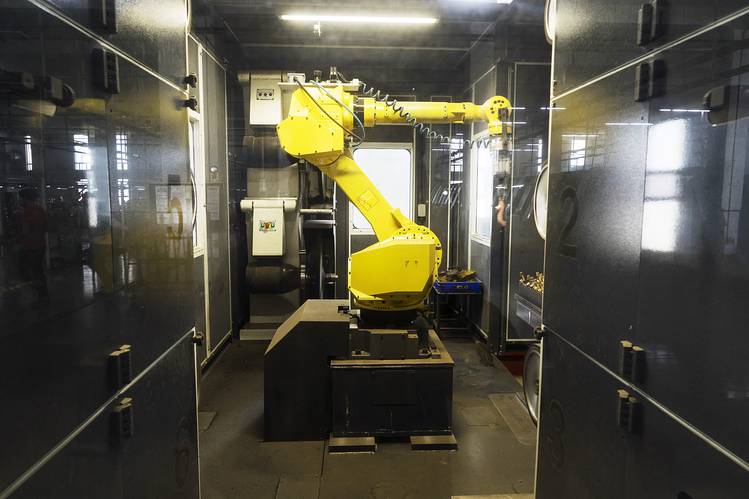
Sujeet Chang, the CTO of Rockwell Automation, told Engineering.com, "With a secure scalable compute approach to analyzing this data -- from device to the enterprise -- users can improve operations and make more informed decisions tailored to meet the needs of the organizations."
The technology would also allow apps to be installed onto the software which would further provide data for companies to observe. The idea is that robot makers will also connect their machines and tailored apps to the network, which could see some automakers connecting to the FANUC network and letting robots build vehicles in a streamlined assembly.
Chief Executive of FANUC, Yoshiharu Inaba, said: "WE believe this will be a de facto standard for factories around the world.
Toshimitsu Kawano, managing director of Beckhoff Automation Japan, spoke to the Wall Street Journal, saying, "This gives Fanuc a tremendous competitive edge because it would be the first player to provide such a service. Bringing the concept of app stores to the factory robot industry is what U.S. and German companies are all planning for, but haven't been able to do."
According to WSJ, FANUC had the biggest share in the global industrial robot market last year. The company owns factories that build Apple iPhones and manufacture Tesla Motors' cars.
Fanuc is working with Cisco, Rockwell and Preferred Networks on the new interconnected factory network system. The FIELD system they have created together consists of sensors within the machinery that observes the efficiency of a factory and then produces the data. The system will also have security measures in place that Cisco and Rockwell Automation specialize in.
Rowan Trollope, Senior Vice President of IoT and Applications at Cisco, said: "This collaboration represents a historic shift in the industry, with IoT, industrial automation, and machine learning coming together to make the factory of the future a reality. It's been talked about for years, but now it is really happening. Cisco couldn't be more thrilled to be a part of this effort, one that will be key to our positioning in other industries that want to realize the benefits of this digitization."
- Details
- Written by: Quintus Potgieter
Ding ding ding. Another fighter enters the ring. Engineers are hard at work trying to convince the decision makers that there will be something better, more efficient and safer than lithium-ion for batteries. Even though half of our smart devices these days are powered by lithium-ion. However, engineers will keep trying to find the next best thing.

Credit: Daniel A. Anderson/UC Irvine
Researchers at the University of California, Irvine have manufactured what they claim to be a 'nanowire-based' battery material that would survive "hundreds of thousands" of charges. Lithium-ion, as we know it in our smartphones, has a charge-life of around three years. If these engineers could introduce something that extended a device's life for more than three years, then it might actually be commercially viable. The team says the benefit of these batteries could stretch to the level of cars and spacecraft as well.
The project to create the battery material was in collaboration with Nanostructures for Electrical Energy Storage Energy Frontier Research Center at the University of Maryland. The result was an actual working battery that worked with 'conductive filaments' that transported electrons like a normal battery would. However, according to YahooTech, the breakthrough was the nanowires which allowed the UC team's prototype's filaments to sustain 200,000 recharging cycles. The average lithium-ion battery can do 5,000 to 7,000 battery cycles.
The breakthrough is particularly impressive because nanowires are a thousand times thinner than a single human hair. What the team did to strengthen the nanowire was to dip a gold nanowire in a manganese dioxide shell, then covered it in an electrolyte that resembled a "Plexiglas-like" gel. The team says this ensures that the nanowire cannot crack like lithium-ion batteries nanowires do.
The results of the tests that proved the battery can do 200,000 recharges was published in the American Chemical Society's Energy Letters.
One of the authors, Reginal Penner, said: "Mya [one of the lead researchers from UC Irvine] was playing around, and she coated this whole thing with a very thin gel layer and started to cycle it. She discovered that just by using this gel, she could cycle it hundreds of thousands of times without losing any capacity...That was crazy."
Whether or not this technology finds its way into batteries of the future, or can somehow be integrated with lithium-ion, it remains a breakthrough for the future of batteries.
Source: University of California
- Details
- Written by: Quintus Potgieter
When engineers look to the natural world for inspiration, it always ends up in interesting discoveries and inspiring designs. Ki-Hun Jeong from the Korea Advanced Institute of Science & Technology is no different. He studied firefly lanterns to discover a way of increasing the amount of light an LED emits.
Along with a team of engineers, Jeong observed that on the outside of a firefly's lantern there is a surface of tiles which make up a nanostructure that allows more light to be emitted. In the Nano Letters the group released, they say:
Many animal species employ conspcious traits as courtship signals for successful mating. Fireflies utilize their bioluminescent light as visual courtship signals. In addition to efficient bioluminescent light emission, the structural compononents if the firefly latern also contribute to the enhancement of conspicuous optical signaling.
Recently, these firefly latern ultrastructures have attracted much interest and inspired highly efficient light management management approaches.
 The team found that the hierarchical ultrastructures found in an actual firefly (Pyrocoelia rufa) emits a light that could be compared to our designed highly efficient organic light-emitting diode (OLED). Using the animal as an inspiration, they were able to formulate their own OLED with the microstructures similar to the natural design of the firefly to ensure OLED emitting light that is 61% stronger than current OLEDs.
The team found that the hierarchical ultrastructures found in an actual firefly (Pyrocoelia rufa) emits a light that could be compared to our designed highly efficient organic light-emitting diode (OLED). Using the animal as an inspiration, they were able to formulate their own OLED with the microstructures similar to the natural design of the firefly to ensure OLED emitting light that is 61% stronger than current OLEDs.
Jeong hopes this discovery can lead to use in TV and cell phone displays. In theory, screens would emit more brightness but use less power than the current screens in the world do today.
- Details
- Written by: Quintus Potgieter
In an effort to roll with the ever-changing punches that come with working with renewable energy sources and the likes, the French oil and gas global company, Total, has announced a new division that will focus on gas, renewables, and power.
From the 1st of September the new division will open with a president that will sit on the company's executive committee, Reuters confirmed.
"Gas, Renewable, and Power will spearhead Total's ambitions in the electricity value chain by expanding in gas midstream and downstream, renewable energies and energy efficiency," the company said.

Credit: Trend News Agency
The company wants to make it known they are throwing their weight behind ensuring that the global energy demand does not continue to produce fossil fuels and will focus on getting energy from cleaner, more renewable sources.
According to SeekingAlpha, Total plans to spend $500 million a year on renewable energies.
The move to prioritise renewable energy comes after fossil fuel prices hit all-time lows in the last year. A report by the United Nations Environment Program showed that in 2015, there was more investment in renewable energy than into fossil fuels.
It also comes after 2015 was confirmed to be the hottest year on record. The revelations of how climate change is escalating was a topic at the COP21 conference held in Paris in December 2015. Governments and global actors agreed that the world must be kept under the 5 degrees centigrade estimation that was made - granted the world doesn't do something about it. Investing money into renewable energy is a duty that global actors like Total must do.
Christopher Knittel, an energy economist at the MIT Sloan School of Management also spoke out against the use of fossil fuels this week. He said: "If we don't adopt new policies, we're not going to be leaving fossil fuels in the ground. We need both a policy like a carbon tax and to put more R&D money into renewables."
Knittel would be pleased to hear the news that Total is pumping a lot of money into renewables. Total's spokeswoman, quoted by Reuters, said: "The idea behind it [investing money into gas, renewables & power] that we will remain an oil and gas major with competitive oil assets that we can exploit with a low break-even point." They also confirmed the move would not jeopardize anyone's job in the company.
- Details
- Written by: Quintus Potgieter
Another day, another battery. Lately, all the battery news out there is about lithium-ion and how it is going to be our saving grace in the world of saving energy and producing clean energy in the world of today. However, lithium-ion production isn't as safe as most people think, so a safer alternative is always being looked for and researched.
A team of engineers from the US Pacific Northwest National Laboratory in the Department of Energy has found that using zinc-manganese could lead to an "inexpensive" rechargeable battery. According to NewElectronicsUK, it would be as inexpensive as a car battery.
Jun Liu, one of the engineers working with the team said, "The idea of a rechargeable zinc-manganese battery isn't new; researchers have been studying them as an inexpensive, safe alternative lithium-ion batteries since the late 1990s. But these batteries usually stop working after just a few charges. Our research suggests these failures could have occurred because we failed to control chemical equilibrium in rechargeable zinc-manganese energy storage systems."

Could it replace lithium-ion as the next battery to trust with our future of producing clean energy? Unlikely due to the amount of money being invested into lithium-ion. Tesla has just built their lithium-ion producing factory in Nevada, and we assume that they wouldn't throw their money behind lithium-ion if they haven't investigated and estimated what other batteries might have made their way to the market in the near future.
However, in terms of safety, there have been some reports that the first wave of energy storage units that are being installed in houses are not as safe as customers would like to think they are.
Moreover, when the Pacific Northwest National Laboratory teamed up with the University of Washington, to put their zinc-manganese batteries through the same tests lithium-ion batteries went through they discovered something interesting. It didn't follow the same processes lithium-ion goes through.
According to Science Daily:
Instead of simply moving the zinc ions around, their zinc-manganese oxide battery was undergoing a reversible chemical reaction that converted its active materials into entirely new ones
The team thinks they might be able to produce an efficient battery by continuing their research into zinc-manganese oxide batteries.
After a few more tests with some added manganese ions to electrolytes in multiple test batteries, the results were conclusive for Jin Liu. He said: "This research shows equilibrium needs to be controlled during a chemical conversion reaction to improve zinc-manganese oxide battery performance. As a result, zinc manganese oxide batteries could be a more viable solution for large-scale energy storage than the lithium-ion and lead-acid batteries used to support the grid today."
- Details
- Written by: Quintus Potgieter
Engineers in Japan are working with what they are calling 'electronic skin' that would be able to bind to your body and display information. There has been some chatter about electronic skins that can repair themselves but this is one of the first working prototypes that actually displays information on it. The researchers say that the skin uses organic light-emitting diode (OLED) which is used in smartphone and television technology. Therefore, you would become a walking, talking smartphone television.
The team from the University of Tokyo have worked on an adhesive protective coating that would protect the electronic elements of the skin from the exposure to the outside world.
Takao Someya, a professor in the Department of Electrical and Electronic Engineering at the University of Tokyo, in an interview with Live Science, said: "Our e-skin can be directly laminated on the surface of the skin, allowing us to electronically functionalize human skin. We think functionalizing the skin may replace the smartphone in the future. When you carry an iPhone, it is a bulky device. But if you functionalize your own skin, you don't need to carry anything, and it's easy to receive information anywhere, anytime."
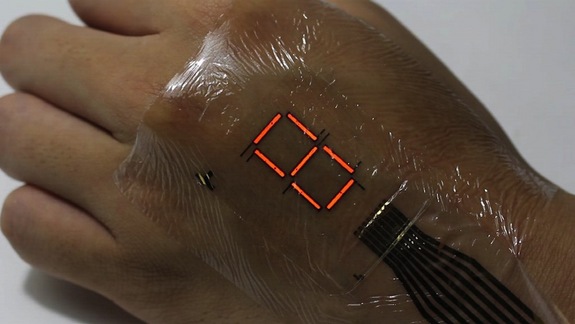
Other prototypes of electronic skin have been made but have allegedly not been as successful as Someya Lab's has, due to air exposure which renders it useless most of the time. Someya's team of engineers was reportedly able to ensure a longer lifespan due to the protective film they have developed.
The film is called a 'passivation layer' and includes "inorganic silicon oxynitride and organic perylene" according to Live Science.
Someya says the ultra-thin skin could monitor people's health and inform a person of how much oxygen is coursing through humans' veins.
On top of that, they say the displaying of information is something they are interested in implementing with the new e-skin.
"The potential uses ranges from information display to optical characterization of the skin," said John Rogers, a professor of science and engineering at the University of Illinois. "Opportunities for future research in this context include the development of power supply systems and of wireless schemes for data communication and control."
The journal ScienceAdvances published the article under the title Ultraflexible organic photonic skin.
The abstract says:
Thin-film electronics intimately laminated onto the skin imperceptibly equip the human body with electronic components for health-monitoring and information technologies. When electronic devices are worn, the mechanical flexibility and/or stretchability of thin-film devices helps to minimize the stress and discomfort associated with wear because of their conformability and softness.
- Details
- Written by: Quintus Potgieter
There are endless possibilities in the Internet of Things industry for engineers. All you have to do is head on to jobs listing websites to see how many software engineers are in demand in the Internet of Things industry. You could see yourself working for Google or Microsoft or Intel in this new wave of jobs available due to the push that the industry is experiencing.
It doesn't stop at software engineering - not by a long mile. Manufacturing.Net writes that job postings have reflected positively for professionals in circuit designers, microcontroller programmers, and electrical engineer. Gartner, a company that deals with information technology research posted their results and said by 2018, 75 percent of IoT projects will "take double the time to complete that was planned for them".
Gizmodo India reports that in five years the IoT industry is looking at a revenue of about $500-600 billion. This would surely make the IoT industry the most important industry in the world in the next five years and crop up a host of new jobs that engineers can fill out, and earn the money that is being estimated here. The estimates came from Sanjay Kaul, who is a Managing Director at Cisco India. He said, "We see a massive opportunity in IoT. Right now, I think we are in the mobilisation phase. I would say 2017-2018 would be execution and 2019, you would see solid revenues pouring in and giving rise to a lot of job opportunities."
It seems India wants to jump on the IoT train whilst it is trending. According to India's Economic Times In New Dehli, a multinational company named NIIT will be training 20,000 students in technologies such as Internet of Things, robotics, and virtual reality.
NIIT President Prakash Menon said, "Looking at the digital transformation across industry verticals, we want to create a talent pool that is equipped with skill sets required...Owing to this growing demand, entry-level and experienced workforce with Digital Transformation Skills are attracting higher salaries as well compared to those traditional IT skills."
Manu Kumar V who works in the IoT industry at HCL Services LTD, told Gizmodo: "An experience in doing multidisciplinary engineering projects with knowledge of at least two or three domains would come in handy. Apart from this, functional knowledge of bid data is important as it's a major force likely to drive the Internet of Things. Information security along with knowledge of data ethics and privacy policy would be increasingly sought-after as concerns over the potential exploits and privacy concerns of the web rises. The versatility of IoT makes collaboration skills -- knowing how to collaborate with people in different industries -- a key requisite for IoT pros."
Therefore, engineers in web security are also going to be in demand for jobs in IoT. There are so many facets to the IoT industries that it might be an incredibly oversaturated industry but one that keeps on giving.
- Details
- Written by: Quintus Potgieter
The equivalent of US$2.2 million in funding has been given to an initiative at the University of Sheffield that pertains to energy storage. The energy storage solution being funded could lead to sustainable energy for the railway business. The project is called the TransEnergy project and is collaborating with National Rail, a partnership that will lead to the powering of railways in the United Kingdom.
Reportedly, energy is consumed at a high level during peak hours in the UK, which is enticing engineers into seeing whether or not energy storage is a viable option for these hours. What the engineers are suggesting is that electric cars parked at a train station lend energy to the station. In return, the customers would get free parking for their contribution to the energy generation at the station.
The engineers are confident it will reduce demand for high amounts of energy during the peak hours and in turn gives passengers who park their cars at stations some added benefits.
According to Phys.org a report published by the National Infrastructure Commission on energy storage revealed that if there is assistance with energy storage through contribution, it could save consumers up to £8 billion by the year 2030. As a result, the UK would meet a goal it has for carbon by 2050 and secure UK energy for further generations.
The entire operation is being funded by the Engineering and Physical Sciences Research Council (EPSRC) with assistance from the University of Leeds and the University of Southampton.
To test the sustainability of the project the team of engineers will build a lab that will facilitate testing of energy storage options and how the batteries would assist the powering of trains.
Dr Martin Foster from the University of Sheffield's Department of Electronic and Electrical Engineering, spoke to Phys.org and said, "Similar energy storage systems are already being used on the electricity grid during peak times and by translating these to our railways, we could deliver real benefits to both rail companies and consumers, bringing down the costs of travel and improving services."
James Ambrose, the Principal Engineer for Network Rail said, "Network Rail is committed to electrifying more lines in the UK. Our project will be working with rail providers to recommend new approaches that will mean increased efficiency for the industry."
Should this work and prove sustainable, it could revolutionize the way railways power trains around the world. However, convincing someone to plug their electric car in and use some of its energy storage capability to power a train station might be a tall order.
- Details
- Written by: Quintus Potgieter
Engineers have discovered a method of doubling Wi-Fi speeds at Columbia University. At the steering wheel of the discovery is Harish Krishnaswamy, an electrical engineering graduate who has utilized one antenna that doubles the speed of Wi-Fi says, "This technology could revolutionize the field of telecommunications."
The work has been doing in the Columbia High-Speed and MM-Wave IC LAB that works with integrated circuits in order for wireless communication to be achieved. They concern themselves with building on already known communication devices and seeing how they can be improved.
It includes utilizing nanoscale 'full-duplex radio integrated circuits' which can transmit and receive using the same frequency, leading to a doubled capacity. Krishnaswamy uses an analogy that pertains to two people talking at the same time - to each other - but can both hear and understand what the other one is saying. That's how this technology works.
Krishnaswamy says, "Full-duplex communications, where the transmitter and the receiver operate at the same time and at the same frequency, has become a critical research area and now we've shown that WiFi capacity can be doubled on a nanoscale silicon chip with a single antenna."
The researchers see a future where this benefits devices like smartphones and tablets. One of the other members of the team, Jin Zhou, said: "Being able to put the circulator on the same chip as the rest of the radio has the potential to significantly reduce the size of the system, enhance its performance, and introduce new functionalities critical to full duplex. It is rare for a single piece of research, or even a research group, to bridge fundamental theoretical contributions with implementations of practical relevance."
The video below will give you more of an idea of how the technology and science work behind creating a one-antenna WiFi chip:
- Details
- Written by: Quintus Potgieter
Chung Hyuk Park is an assistant professor of biomedical engineering that has morphed mechanical, electrical and computer engineering into his career as well. The end result? A soccer playing robot that would be able to interact with autistic children. The robot has been designed to interact with children and communicate with them as well. Through collaboration with other engineers, they combined their skills and built the robot.
Park said he wanted to build something that would assist children with autism in learning new things, making friends and "pursuing happiness and take meaningful steps into their lives."
"Robotics may not be the cure, but it can help them to practice their social skills, to engage in emotional and social activities and to help them gain more confidence in their human interactions."
Some of the robots (shown in the video below) dance, some of them play soccer and some of them speak as well. The robots can be controlled through iPhones and according to GWHatchet can also show emotion through sending emoticons to the iPhone's screen.
"We tried to combine musical interaction and robot interaction for children with autism to better promote engagement and social interaction. They [the children with autism] might have some specific behaviors, and mimic them in a friendly way, then the robot can develop a better rapport with the children. And they can be friends and be more effective in engaging with them."
The National Institute of Health assisted Park with the project, granting him $690,000 for three years of research in the robotics industry. He is working to make the robots affordable enough for parents to buy with children who have autism, specifically.
Please note: The video below is out of sync towards the end of the video, but check it out, it's quite something:
- Details
- Written by: Quintus Potgieter
An engineering career might take you many places. Places that you never thought you would ever find yourself when you started. This rang true for engineers in Tokyo, who found themselves working with the Jamaican Olympic bobsledding team. Ota Ward is the company involved with the team building a model that has been designed and manufactured for the 2018 Winter Games in South Korea. The company hopes to engineer a bobsled that would go up against the best and achieve glory for the notorious Jamaicans.
According to Nikkei Asian Review, Ota Ward's immediate rivals in the bobsledding design arena is BMW and Ferarri. The Jamaican team has been practicing with the model in Tokyo to see if it is an acceptable model for the upcoming tournament.
The President of the Jamaican Bobsleigh Federation said what he has seen so far is positive, with the team achieving good times despite not working with the bobsled before. He applauded the engineers and said that the team will be using it in the competition.
Explaining how the bobsled is crafted, Nikkei Asian Review wrote:
They are made up of about 200 components, with the main parts consisting of a protective hull -- called a cowling -- in the front; runners, which glide over the ice ; brakes ; and handles. So for a group of skilled engineers whose bread and butter involves solving complex technical problems, making a bobsled was easy. What was challenging for these shitamachi craftsmen was making one that me the demands of a sport where the difference between victory and defeat is measured in miliseconds.
Osamu Nishimura, deputy head of the bobsled project and president of precision equipment company Ace, said: "For small factory engineers like us, it's natural to respond swiftly to clients' needs. The work spirit we have established over time served us well for this project."
The companies that assisted the project, each had their own part of the bobsled to perfect:
Kamijima Heat Treatment: responsible for process the axles
Shinsei-SP: bending technonology for creating complex shapes
Muso: produces test materials, provided its cutting technology to shape the runners to within a thousandth of a millimeter of the specifications.
- Details
- Written by: Quintus Potgieter
In March, it was widely reported that the mining industry was losing jobs globally. According to a Quarterly Employment Survey observed by PoliticsWeb in South Africa, 29,000 miners lost their jobs between December 2014 and December 2015. In the United States, 12,400 mining jobs were lost in March 2016 alone according to the Bureau of Labor Statistics. In April, it was reported that 29,000 manufacturing jobs were lost from September 2014 as well.
Now, the Canadian Mining Journal is reporting that Canada's mining industry is also under pressure. According to the website, "40% of mining sector employees are 50 years old" and a third of them are retiring in 2022.
Therefore, Canada is preparing itself for a lack of skilled professionals in the mining sector. The claim is that universities are cutting down on university programs that involve metallurgical engineering and programs that assist professionals in the mining sector.
The worry from the Canadian government is that the "youngest Millenials and the following generation" will struggle to fill positions in the mining sector.
The Mining Industry Human Resources Council wrote a report named Canadian Engineers for Tomorrow- Trends in Engineering Enrolment and Degrees Awarded 2009-2013 and found that students that graduated between 2011 and 2016 "are or will be experiencing difficulty" in getting entry level jobs or internships.
Due to the amount of jobs lost in the mining sector in South Africa, a fresh wave of protests could collapse the industry. BNP Paribas Securities economist, Jeff Shultz, talking to BDLive, said, "A strike would provide yet another damaging blow to the sector, which is still struggling to recover from the crippling industrial action that brought it to a standstill in 2014, and further jeopardise the already highly fragile state of employment in the industry this year."
- Details
- Written by: Quintus Potgieter
Bath University in the United Kingdom is one of the leading universities internationally recognized for teaching and research. Dr. Manuch Soleimani works in the department of electronic and electrical engineering, at the helm of a Shell-Thick project that researches steel solidification.
The methods they are working on would refine the process of casting steel. They would be able to accurately see when "defects or fails" occur when steel solidifies.
The process is called induction tomography. It used to see the electromagnetic properties of an object. It is done in non-destructive testing - such as the observing of molten steel before it solidifies - and geophysics.
Soleimani, an associate professor at Bath University, spoke to The Engineer, saying:
"Magnetic induction tomography attempts to image the passive electromagnetic properties of an object by measuring the mutual inductances between pairs of coils placed around its periphery.
Measurements are acquired by passing an alternating current through excitation coils, a primary magnetic field.
This magnetic field interacts with conductive and permeable objects in the medium to produce eddy currents, which, in turn, produce a secondary magnetic field, which is measured by sensing coils.
As the secondary field depends on the materials present, the measured induced voltage is a non-linear function of the electrical and magnetic properties of the medium, that is, conductivity."
The methods they use will look at electrical conductivity and show results of structural composition in the cooling process. The Engineer says that the technique would be able to improve the "quality, safety, productivity, costs and ultimately competitiveness of the UK and EU steel industries".
The UK industries could use any money savers at this point due to a struggling outlook of the future with the steel industry. Soleiman said, "Technology could enable us to be ahead in the production of high-quality steel. Considering the cost of energy here and not having the subsidisation as China has, the only way to compete is having high quality and this is one step."
The current project is in collaboration with Fundacion Tecnalia Research & Innovation in Spain and steel industry companies Ferriere Nord and Ergolines Lab.
Source: The Engineer
- Details
- Written by: Quintus Potgieter
A civil engineer out of Kansas State University has partnered with the Kansas Department of Transportation to generate a crash prediction model for "rural multi-lane highways".
Syeda Rubaiyat Aziz is working towards her doctorate in civil engineering and says, "Saving even a single life would be important for Kansas, as well as for the United States."
The research began with looking at the American Association of State Highway and Transport Officials' Highway Safety Manual methodology. Then using Google Maps - which has comprehensive traffic statistics in real time - and video from highways in Kansas to study roadways and intersections that have experienced crashes. She was funded by the Kansans Department of Transport that specializes in road and bridge maintenance, transportation planning, contract compliance and transportation-related administrative support.
According to GCTelegram, she categorized road accidents into levels of severity: "fatal crashes, injury crashes, and property-damage-only crashes". Then she cross-references those details with the regular accidents that occur and which intersections they occurred at. She then tries to find a way around how these accidents happen so that something can be put in place to prevent them.
Sunanda Dissanayake, a professor of civil engineering, said, "Rural highway safety is a critical issue in Kansas, and the number of fatalities due to motor-vehicle crash involvement is considerable. Finding ways to save lives will bring enormous benefits on all fronts."
Elsewhere in the world, in Ghana, engineers have also tried to create a crash prediction tool. What they found in 2011 when they published Crash prediction model for two-lane rural highways in the Ashanti region of Ghana, was that individual crash prediction models would have to be made for every individual highway because no highway in the world is the same.
Crash Prediction Models (CPMs) have been used elsewhere as a useful tool by road Engineers and Planners. Fletcher et al found that due to wide differences in traffic mix, road quality, design and road user behaviour, it would be neither valid nor useful to apply simple multiplicative factors or even devise more complex conversion formulae for models developed elsewhere for another country.
Therefore, the work of engineers in their own state, provinces and countries are invaluable in crash prediction tools to perhaps save the lives and ensure a better quality of life for drivers whilst cars are still fully manual. Once cars are automated, it could be that the cars calculate the crash predictions by themselves.
Source: WIBW News Now
- Details
- Written by: Quintus Potgieter
Tomsk Polytechnic University has put their computer engineers to work to create an algorithm for surveillance cameras that will detect a face in a crowd of people in high resolution. Allegedly, the algorithm would be able to calculate the number of people in the frame, the gender and age of the people being filmed.
Ilya Kalinovskii, the developer of the algorithm and a Ph.D. student in the Department of Computer Engineering at TPU, said, "In order to detect a person on his face image in the crowd, like on stadium or in subway it is required to work with an image in scene with very high detail. 4K resolution is suitable for this purpose. Because of the large amounts of data, it is difficult to even store these videos not only to process them, not to mention intellectual analysis."
CCTV is being revolutionized by the 4K, ULTRA HD movement which has equalled better quality video which is better for businesses that would need to identify criminals and see all of the details. Monitors cost less as well which makes buying a UHD CCTV setup is becoming inexpensive. However, there is a problem of exporting the video to other sources due to the sizes of the recorded video. Advanced data storage will also need to be factored in for businesses who opt in for a 4K solution.
Security Electronics and Networks speaks about the technical part of it, saying that running a UHD setup has more to it than meets the eye:
If the sensors are large enough, the lenses are good enough, the light levels high enough, the network is capable enough and the storage sufficient, then Ultra HD cameras will give end users a lot more detail than 3MP 1080p cameras can. But this capability has to be balanced against many things. Image quality is about more than megapixel count.
Vlado Damjanovski, an employee of ViDi Labs when asked whether 4K is the next CCTV standard, he said, "My answer is yes and no. 4K is a known development in broadcast TV but CCTV is only a little sister of broadcast technology, and eventually follows its trends. But unless the technology trend is developed by the larger broadcast industry, its very unlikely CCTV will develop a whole new standard on its own. So yes, it is the next big thing, but not so big as some may want to think."
However, according to IFSEC Global, who focus on companies that utilize factories with production lines and anything in the industrial sector say that 4K could be useful in manufacturing plants. They say:
The number of pixels across the image required to cover the production line is 5,120. So in order to cover that area with HD cameras (delivering 1920 X 1080 pixels), you would need three cameras.
However, if you instead specified the use of Ultra HD 4K cameras (delivering 3840 X 2160 pixels) like the new Sony VM772R, you would be able to cover the whole production line and associated components with just two cameras
They also say it would help with accident claims from employees and would be able to cover both the employee and the business sufficiently. The case for 4K surveillance is becoming more apparent in the world of production line factories.
However, a report released this year named 'The top surveillance trends for 2016' by IHS (a company that generates statistics and provides information from surveys) says that 4K has not yet convinced anyone in surveillance industries. They say, of the "66 million network cameras predicted to ship globally" this year, only one percent of the sales will be Ultra HD devices.
It is estimated that Ultra HD will only be further into becoming the next standard of CCTV in 2018. Until then, if you have the hardware and data storage space for 4K surveillance, it could help you in identifying something that could save your business and its assets.
- Details
- Written by: Quintus Potgieter
Australia Post is following in the footsteps of Amazon with intentions to launch a drone delivery system. The post office tested out a drone delivery in a 'closed-field' trial to test the possibility of implementing drone delivery in the future.
A prototype drone built with four rotors, what ABC is calling a "suction device" for the parcels and a cable to hold it in place as well. This is a little different than Amazon's "clamp-on" system that its drones have. Australia Post says their drone is able to lift packages of up to 2.65 lbs.
The hope is that by the end of 2016, at least 50 Australia Post customers will receive packages via drone twice a week.
Australian Post chief executive, Ahmed Fahour, said, "The project was about complementing, not replacing, the way parcels were delivered. Just like vans, trucks, and aeroplanes, they didn't replace what we do."
However, Australia Post might have a host of other drones to fly around to get their parcels delivered due to new drone laws.
The trial seems to have happened quite soon after drone laws were tweaked, making drones available to commercial operators. According to Ten News, soon Australians will not need licenses to fly drones but only a certificate of registration from the Civil Aviation Authority.
Peter Gibson of the Civil Aviation Safety Authority, said, "People who want to fly drones commercially; if their drone weighs less than two kilograms they will now face less red tape, fewer costs..."
The Sydney Morning Herald is reporting that only 10 percent of Australians want drone delivery at all, which is not a big percentage. So maybe some convincing is needed.
Regardless, Fahour is insistent that drone delivery will form part of Australia Post soon. He said, "We're exploring the viability of adding this to our multiple methods of delivery. We're pretty confident that if we can get through this [trial] we'll be able to offer this experimental service towards the end of this year."
- Details
- Written by: Quintus Potgieter
Engineering students from Zakir Hussain College of Engineering and Technology in Aligarh, India claim to have an answer to doing blood tests without the needle prick that some people fear. This was achieved reportedly using electrical properties of blood cells that to successfully count red blood cells (RBC) and white blood cells (WBC).
The researchers have used a laser that will count the blood cells when placed on superficial veins and according to HindustanTimes, the lower lip is one of the best areas of the body for this.
The students say this will be the first time blood tests are performed without a needle prick being necessary.
Rohan Maheshwari, the leader of the four students behind the new innovation, explained how it works:
Once the data is collected it will be transferred to software that analyses and compares the blood cell count with the standard data. Using the concept of cloud computing, the software will send a text message to the patient's phone. If it detects some considerable deviation, the doctor concerned will recieve the acquired data. The doctor will be able to treat the patient from home and notify the pharmacy about the prescribed medicines that have to be delivered to the patient's home
The students also walked away with the winning prize money at the GE Eidson Challenge 2016.
The prototype was also applauded for its other medical benefits it could provide in the future of biomedical care. A gynaecologist, Dr Jyotsna Mehta said, "Increase in the WBC count is indicative of acute bacterial infection. The prototype can be of great help in detecting such infections."
- Details
- Written by: Quintus Potgieter
The Global Foundation for Ocean Exploration has taken to Kickstarter to try and crowdfund a project that would see a team of engineers building an underwater robot to explore Yellowstone Lake. Yellowstone Lake is the largest freshwater lake above 7,000ft in North America.
The leader of the team Dave Lovalvo, a keen ocean and large lake explorer for the last thirty years now wants to take on the lake. The team he presides over already has a robot called the Deep Discoverer robot. He has already sent a robot into the lake before in the '90s but now they are starting a new project.
Talking about the team he set up, Lovalvo said:
So I started the foundation. I made the commitment to build a team of young engineers who are passionate about this - as passionate as I was when I first started. In the last year the foundation has grown signficantly. We have mechanical engineers, we have electrical engineers, we have software engineers, we have video engineers.
Lovalvo's stance is that the only way to preserve Yellowstone Park is to study and understand it and that also involves studying the lake. The team say they need $100,000 in crowdfunding to make the robot happen, with a donor that will match every dollar that comes in.
According to TreeHugger, "the geothermal activity of Yellowstone creates an ecosystem that consists of a variety of organisms that exist nowhere else on Earth."
Once the Yellowstone project is complete, they will continue to use the robot to survey other lakes and oceans so that they can be studied.
To contribute to the Kickstarter campaign:
- Details
- Written by: Quintus Potgieter
Researchers at the Missouri University of Science and Technology have invented a 3-D microwave video camera. The team says the camera would be able to conduct industrial inspection and security screening. The camera operates at 20-30 gigahertz and uses non-ionizing electromagnetic waves which are not harmful to humans.
Talking to Missouri S&T News, Dr. Mohammed Tayeb Ghasr, assistant research professor at Missouri S&T, said: "It's like an airport scanner but much smaller. It's portable, so it can be used on-site wherever it is needed." The microwave 3D camera can take photos and produce high resolution at 30 frames per second.
Ghasr has expressed his confidence in the camera and it said it could even serve a purpose for first responders in the medical field. He spoke of how a first responder could take photos of a burn victim and they would be able to determine the severity of the burn.
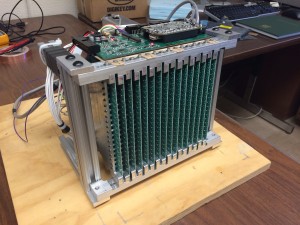
The researchers are also confident in its ability to find contraband within covered up compartments like bags that go through airport terminals. The portability of the camera compared to current cameras in airports might make this particular camera quite popular in the future.
The camera is ideal for inspection of composite structures that are increasingly used in the transportation, infrastructure, space, aerospace and other similar industries. Because microwave signals can penetrate non-metallic materials, this system is expected to find signficant use in inspecting ceramics, fiberglass, plastics and high-density polyethylene pipes
- Details
- Written by: Quintus Potgieter
A company from the United Kingdom named Renewable Energy Systems (RES) has published what they say are five lessons they have learned since investing a lot of their time and money into energy storage involving lithium-ion batteries. The company has experience with solar and wind technologies but in 2014 started using lithium-ion in Ohio, in the United States.
1- Controls and monitoring are essential to ensure safety and maximise value for owners
2 - Integrated solutons are essential for cost-effective design, sucessful operations and commercial simplicity
3- Financing a large-scale battery storage project is possible
4- Regulations and (the lack of) market rules continue to create unceratinly, which places additional burden on the early projects
5- Long-duration lithium-ion is becoming viable
- Extract fom Five lessons from the storage frontline
The company says the lack of control and monitoring will lead to battery fires and that is the last thing the industry needs right now. The list of lessons should be a good checklist for other companies interested in getting into the lithium-ion game.
However, is lithium-ion the only sustainable element we could use for sustainable energy storage?
Canadian Manufacturing has reported that vanadium is another element that could be used to build sustainable batteries in the future as well.
Tim Hennesy, president and COO of vanadium battery maker, Imergy Power Systems Inc. said: "Vanadium is the only metal on the planet which can act in its own right - just as one metal - as a complete battery. Every other battery you need two elements...to create this difference which allows a battery to exist."
Another company involved in vanadium is Australian Vanadium (AVL) that in collaboration with Gildemeister Energy Storage will be selling a product named the CellCube. It is a vanadium redox flow battery.
AVL managing director, Vince Algar, told CleanTechnica, "The future of vanadium demand is strongly tied to the global need for large-scale energy storage."
The distinction that must be made is that vanadium batteries cannot power devices like laptops or cell phones like lithium-ion can. However, for large-scale energy generation, it is used because it can be recharged thousands of times without dying like lithium-ion batteries. The only issue is "low energy density". Could lithium's reign but over soon when engineers figure out how to utilize vanadium for commercial purposes?
More news as this story develops .
- Details
- Written by: Quintus Potgieter
The future of robotics is in the hands of the engineers currently working in automation and the children who are interested in pursuing a career in robotics. Moscow hosted Robofest 2016, which saw a host of young, budding, engineers show off their robots. From shirt folding robots to rough-terrain navigating robots, the event looked to be a treat. Here are some of the highlights thanks to RT:
According to RT, the robotics conference included:
- 3500 school children
- 1000 engineering teams
- Winners represent Russia at robotics competitions in the US, Europe, and Southeast Asia
- Ages 6 to 30
- Details
- Written by: Quintus Potgieter
LG Electronics in collaboration with Korea Water Resources Corporation (K-Water) are taking solar to the seas. Okay, maybe just dams and rivers for now. The two are actively conducting research into floating solar power generation technologies. The companies have signed a memorandum of understanding at the K-Water HQ in Daejon according to BusinessKorea. They will utilize engineer employees to invent solar-water technologies in hopes that it will generate energy.
Their main aim is to build floating solar power panels that would be placed in seas, dams and open bodies of water to hopefully catch some sun. BusinessKorea says that solar power generation "is known to have about 10 percent higher energy efficiency compared to land solar power generation" due to the cooling effect that water has on a solar panel. The solar panel is kept cool by the water and does not consume as much land as land-based solar panels.
Part of the agreement stipulates that the companies must create an energy storage system together, must open water purification plants and a tidal power plant, among other small businesses that they must open as well.
President of K-Water, Lee Sang-bong, said: "Solar energy generation is one of the best systems that can create synergy with diverse water resource at reservoirs, dams, and beaches. We will push ahead with the global energy market with K-water."
In a recent video published by TechInsider, a floating solar farm in a reservoir outside of London was shown off by Thames Water. The claim by TechInsider is that they pay $144 million for power in London but the new solar farms could cut $28 million off of that bill.
- Details
- Written by: Quintus Potgieter
Good news for engineers in the piping industry. CAD Schroer, a 3D plant design software company has released a software called M4 ISO that would assist with the process. Also known for their MEDUSA4 software, the company gives mechanical engineers the ability to develop designs for practical uses in the industry.
The new program assists engineers with pipework fabrication, creating drawings with Creo 3D geometric data. If you already use PTC Creo Piping, fear not, M4 ISO is able to plug straight into the program.
PTC Creo Piping's software has many positive attributes. This is what happens
- Minimize errors and reduce time-consuming tasks by automating the capture of all relevant system information, such as the schematic design, virtual prototype, or manufacturing documentation
- Fully automate your routing so you can quickly determine the optimum path for manufacutring, cost, and serviceability
- Increase design speed through the reuse of standard symbols, connectors, and fitting contained in customizable library
- Reduce costs and design time by eliminating the need for physical prototypes, made possible through virtual interference checking and automated manufacturability verification
Talking about the new M4 ISO program, Mark Simpson, the product line manager at CAD Schroer, said that the software can accurately depict pipe spools "of all sizes, lengths and complexities on a single sheet." He added, "The advantage of our solution is that the Creo Piping user can, at the touch of a button, immediately obtain complete and detailed piping isometric drawings for either all or a selection, of the pipelines. Although one does not see a lot of M4 ISO, it delivers excellent results. All of the drawings, bills of materials, tube cutting lists etc. are made available in the blink of an eye, and they can be passed on to the production domain."
There also piping templates - which can also be modified - available to engineers so they don't have to draw from scratch. The software instantly makes the engineer's job easier and gives the entire team an accurate 3D documentation of what the piping network should look like and ensures safer practices by an entire team.
